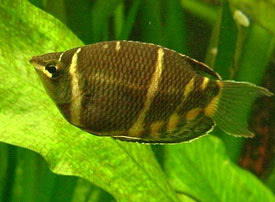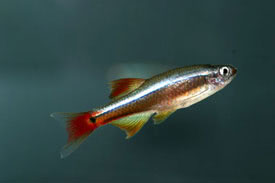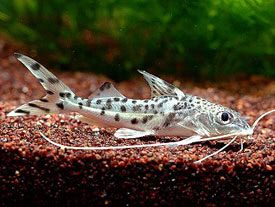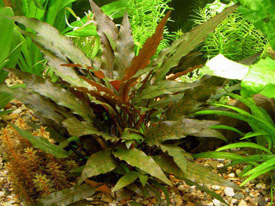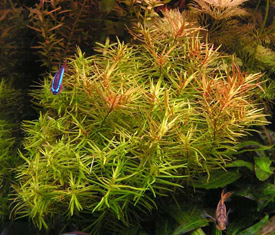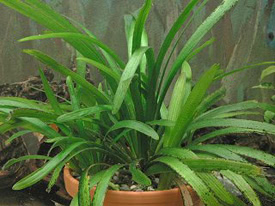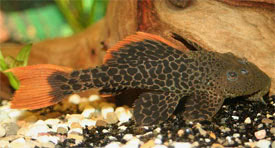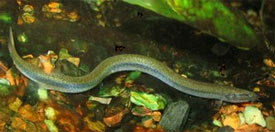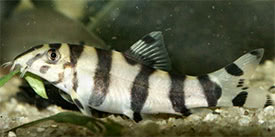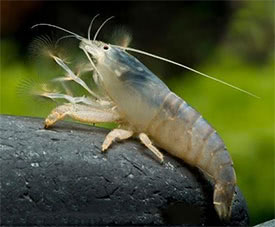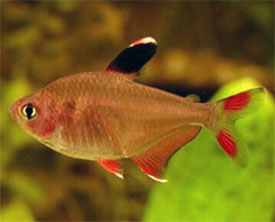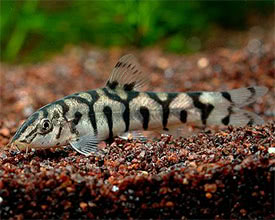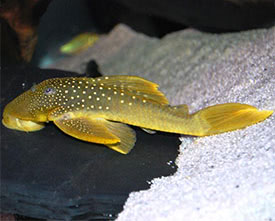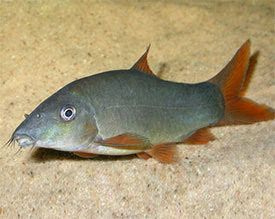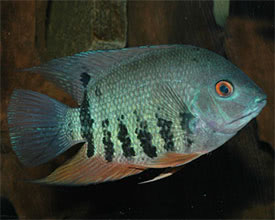
 Magyarul / Hungarian
Magyarul / Hungarian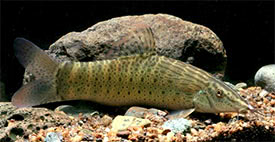
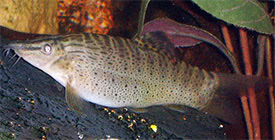
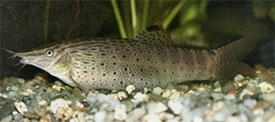

- Scientific name: Syncrossus beauforti
- Synonyms: Botia beauforti, Botia lucasbahi, Botia beauforti formosa, Botia yunnanensis
- Common name: Chameleon Loach
- Group: Loaches
- Habitat: Asia; Cambodia, Thailand, Malaysia
- Size: 16-18 cm
- Biotope: Found in small and medium-sized forest rivers. Burrows in sand or digs holes under rocks.
- Social behavior: Can be belligerent and should not be kept with much smaller fish. Can be kept in a biotope tank with large peaceful fish that swim in the upper part of the water column.
- Diet: Omnivorous; in nature it mainly eats insect larvae and benthic organisms. In the aquarium it can be fed with small live and frozen foods, and quality dried foods, plus some vegetable matter such as cucumber or spinach. It will eat small snails.
- Breeding: It has not been bred in aquarium.
- Tank: Minimum 200 litres
- Population: 5-6 fish for 350 litres
- Decoration: Use sand or small gravel as substrate. Decorate the tank with with lots of smooth, water-worn rocks and roots. The lighting shouldn’t be bright, and use plants that able to grow in such conditions like Microsorum pteropus or Taxiphyllum barbieri. Water movement can be moderately strong.
- Temperature: 22-30 °C
- pH: 6-7,5
- Hardness: 2-12 NK°
- Lifespan: 8-10 years
Description: Syncrossus beauforti looks similar to Syncrossus berdmorei which is native to India and Myanmar. While Syncrossus berdmorei has 9-10 branched dorsal-fin rays, the Chameleon Loach has 11-14. Both fish has longitudinal rows of small, dark spots running across the entire body and head, but in Syncrossus berdmorei these markings are a little larger. Syncrossus beauforti has 9-12 faint vertical bars on its body. In adult specimens these bars may fade, leaving only the rows of dark markings. There is a black margin and 3 longitudinal rows of spots on its dorsal fin, while there are several vertical rows of spots on its caudal fin. They are also able to make clicking sounds, usually when excited.
Syncrossus beauforti like to hide itself into small gaps, so do not use sharp edged or too small decorations in the aquarium, as the fish may become trapped. These loaches are schooling fishes, so they should be maintained in small groups of at least 5 or 6 specimens, because when they kept singly they become more aggressive, and when kept in pairs the dominant fish may harass the weaker specimen. This species is listed on the IUCN Red List as Near Threatened, due to over-collection, pollution, and habitat degradation. Chameleon Loach do best when the water is well-oxygenated with a medium degree of flow. Chameleon Loach is known to be intolerant of high nitrate levels, so regular water changes of 30-50% tank volume is required.
Mature females have fuller body and grow a little larger, while adult males have elongated snouts with thickened lips. There are no reports about their breeding habits.








